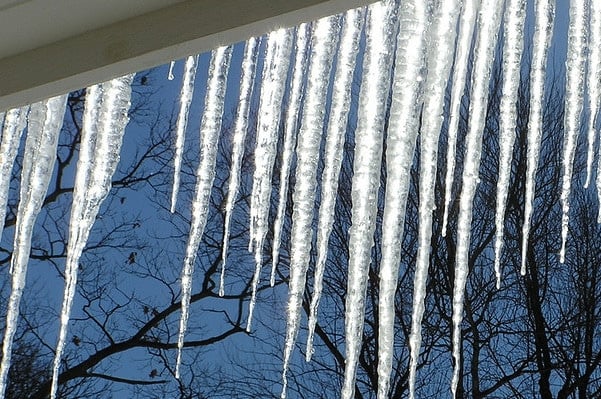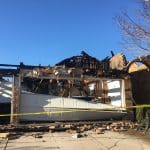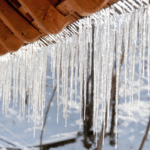Winter is fast approaching, and ensuring your home is adequately prepared is crucial for both safety and comfort. Here’s an in-depth guide with expanded information on each of the ten ways to get your home ready for the colder months:
- Heating System Maintenance: Regularly check your heating system to ensure it functions optimally. Begin by inspecting the entire system for visible signs of wear or damage, such as rust or unusual noises. Turn on the heating system and pay attention to how quickly it produces hot air. Test the thermostat to ensure it accurately reflects the temperature settings. Additionally, schedule periodic professional inspections, especially before the winter season, to address any complex issues that may not be apparent during a routine check. Hiring a certified technician from the Air Conditioning Contractors of America (ACCA) can provide a comprehensive assessment and maintenance plan tailored to your system’s specific needs.
- Fireplace and Chimney Care: Proper maintenance of your fireplace and chimney is crucial for both safety and efficiency. Start by thoroughly cleaning the fireplace, removing any ash or debris. Next, enlist the services of a certified chimney inspector to examine and clean the chimney and vents. This professional assessment ensures that there are no obstructions, creosote buildup, or potential fire hazards. Keep the flue closed when the fireplace is not in use to prevent drafts, and remember to open it before starting a fire to allow for proper ventilation.
- Smoke Alarms and Carbon Monoxide Detectors: Ensure the safety of your home by regularly testing and replacing the batteries in smoke alarms and carbon monoxide detectors. Perform a monthly check to verify that each device is operational, and replace batteries at least twice a year. If you don’t already have a carbon monoxide detector installed, consider it a critical investment for safeguarding your family against this odorless and potentially deadly gas.
- Window and Door Sealing: Conduct a thorough inspection of windows and doors for any signs of leaks, gaps, or damaged caulk. Address these issues promptly by applying silicone caulk for outdoor repairs. Additionally, enhance energy efficiency by adding weather-stripping around doors to prevent heat loss. This proactive approach not only keeps your home warmer during the winter months but also contributes to energy conservation.
- Insulation Check: Assessing the condition of your home’s insulation is essential for maintaining a comfortable indoor environment. Inspect the attic to ensure insulation is evenly distributed and free of damage. Identify potential drafts near electrical outlets and switches by feeling for temperature variations. Seal these gaps using inexpensive insulators that can be easily installed with a screwdriver. Adequate insulation not only retains warmth but also reduces energy consumption, leading to cost savings in the long run.
- Gutter Cleaning and Inspection: Regular gutter maintenance is vital to protect your home from potential water damage. Start by removing debris such as leaves, twigs, and dirt from the gutters. Clogged gutters can lead to water backups and ice dams, which may compromise the structural integrity of your roof. Perform a comprehensive inspection to identify any signs of wear or damage to the gutters, including loose brackets or leaks. Timely cleaning and repairs before the onset of cold weather ensure proper water drainage and prevent potential issues during winter storms.
- Tree Branch Trimming: Safeguard your home by inspecting your yard for overhanging tree branches that could pose a threat during winter weather. The weight of ice or snow can lead to branch breakage, potentially causing damage to your property. Trim back overhanging branches to reduce the risk, or consider hiring a professional arborist to assess and safely remove any potentially hazardous limbs. Proactive tree maintenance not only protects your home but also enhances the overall safety and aesthetics of your outdoor space.
- Outdoor Plumbing Precautions: As winter approaches, take proactive measures to prevent outdoor plumbing issues. Drain and disconnect outdoor hoses, ensuring that no water remains in the pipes. If you have a sprinkler system, properly drain it to avoid freezing and potential damage. Install insulated covers over outdoor faucets to provide an additional layer of protection against freezing temperatures. These precautions help prevent pipe breaks, ensuring that your outdoor plumbing infrastructure remains intact and fully functional.
- Pipe Protection: Guard against potential pipe damage during cold spells by maintaining a warm environment around exposed pipes. Keep cabinet doors open in kitchens and bathrooms to allow warm air circulation around plumbing. Additionally, let faucets trickle slowly during extremely cold weather to maintain water flow and prevent pipes from freezing and bursting. These simple yet effective measures can save you from the inconvenience and expense of dealing with frozen or burst pipes during winter.
- Ceiling Fan Adjustment: Maximize energy efficiency and comfort by adjusting the rotation of your ceiling fans during winter. If your fans have a reverse switch, utilize it to change the direction of the blades. This creates an updraft and downdraft that redistributes warm air throughout the room, optimizing heating efficiency. By using this simple strategy, you not only enhance the warmth in your living spaces but also contribute to energy savings, promoting a more sustainable and cost-effective home environment during the colder months.
Prepare your home for the winter chill by ensuring your heating system is in optimal condition, cleaning and inspecting your fireplace and chimney, and checking and replacing batteries in smoke alarms and carbon monoxide detectors. Seal windows and doors to prevent heat loss, inspect insulation, and clean gutters to avoid water backups. Trim overhanging tree branches, take precautions with outdoor plumbing, protect pipes from freezing, and adjust ceiling fans for energy-efficient heating. These proactive measures will help safeguard your home, keeping it warm, safe, and comfortable throughout the winter months.
By diligently addressing these aspects, you can ensure a safe and comfortable winter in a well-prepared home. Stay warm!





